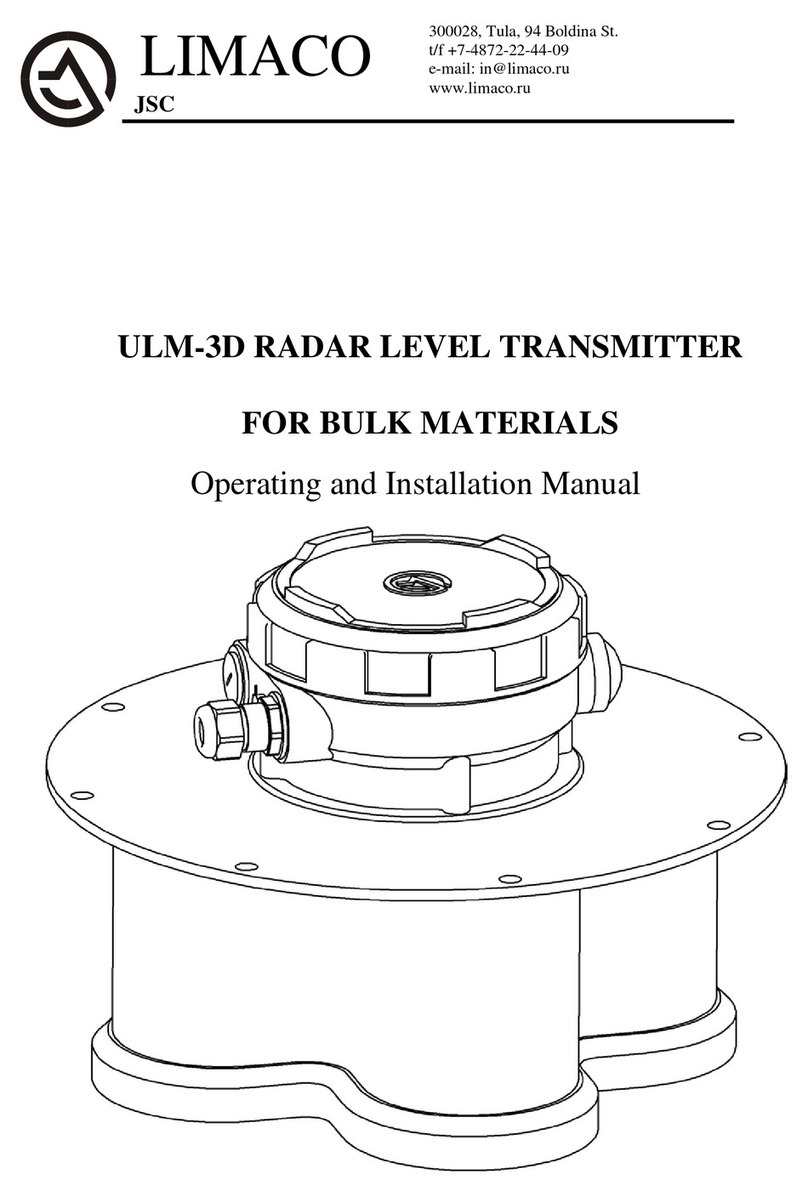3 PRODUCT DESCRIPTION
3.1 Level Transmitter Scope of Supply.
The scope of supply includes:
- The radar level transmitter (ULM-31-HF, ULM-31А1, ULM-31А1-HF, ULM-31-
HF-F, ULM-31А1-HF-F, ULM-31А1-HF-F-LC);
- The setup software and the documentation on electronic medium (compact disk
CD):
- The software program for Ulmcfg setup;
- The driver SW (Bluetooth, HART);
- The Operation Manual;
- The additional documentation (certificates and permits, the other technical
information, if necessary).
The software and the documentation on electronic medium can be supplied in the
amount of 1 pc for the whole order complete set according to specification.
The auxiliary equipment that may be included in the order specification:
- The upper level software:
“Limaco OPC Server”;
OPC Client –“Reservoir Viewer” measuring system visualization;
- power supply;
- interface RS-485 converters;
- interface HART converters;
- configurator's control panel PL-01;
- sealing gasket;
- adapting flange.
The particular type of auxiliary equipment (interface adapters, flanges, sealing gas-
kets) may be of different design; it is agreed during the equipment order and is spec-
ified in the order specification.
One of adapting flange variants - temporary flange is given in paragraph 12.14.




























